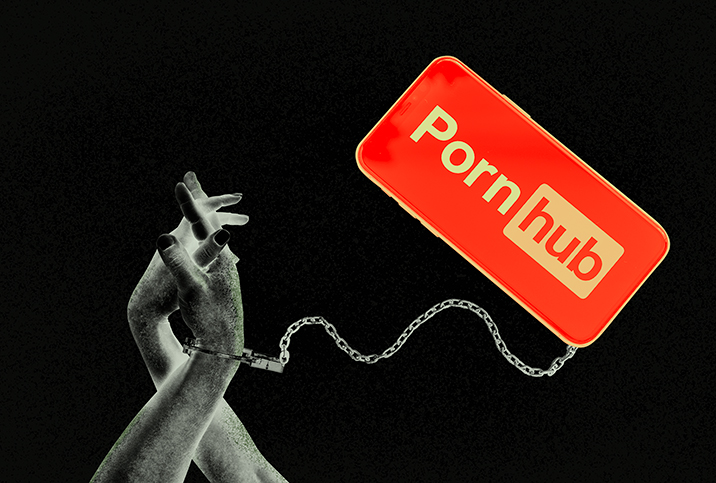How Can I Set and Actually Maintain a Boundary?

Boundaries protect our well-being and foster functional and healthy relationships, but to be effective, the foundation has to be applied correctly.
Those who were raised without the education of psychologists on TikTok may be used to people crossing lines in our lives while thinking nothing of it. So the idea of setting and maintaining boundaries with people may feel alien.
But it's never too late to learn how to "throw down a boundary."
What are boundaries?
"Boundaries, simply put, are what is and isn't acceptable when it comes to our treatment," said Michelle Elman, a London-based life coach and author of "The Selfish Romantic." "We need them in all areas of our life in order to know our identity, honor our needs and stand up for ourselves."
Boundaries apply in all spheres of life and act as a verbal shield for our physical, emotional, sexual and relationship needs.
"Physical boundaries relate to your physical space and personal touch," said Pippa Murphy, a London-based sex and relationship expert for Condoms.UK. "Examples of physical boundaries include not allowing people to invade your personal space, not tolerating unwanted physical touch and being clear about your comfort level with displays of affection."
'Boundaries, simply put, are what is and isn't acceptable when it comes to our treatment.'
Potential emotional boundaries could encompass limiting the information you share with new people or restricting what topics you are comfortable joking about. Time boundaries help maintain a strict separation between work and leisure time.
"Relationship boundaries relate to how you interact with others in your relationships," she added. "Examples of relationship boundaries include being clear about what you will and will not tolerate in terms of behavior, not allowing others to control or manipulate you, and being clear about your own needs and expectations in the relationship."
Digital boundaries refer to your use of technology and social media. These could include not responding to work emails outside of work hours, limiting what personal information you share online and how much time you spend on social media.
Identifying your boundaries
Not everyone's boundaries look identical; therefore, it's crucial to ask yourself: What are mine?
Don't apply someone else's rulebook to your own life out of convenience.
"Take note of when you feel uncomfortable or uneasy in a situation," Murphy explained. "What were the circumstances? What was it about the situation that made you feel uncomfortable? Next, pay attention to how you react in these situations, as your body and mind are likely to have given you physical or emotional cues that your boundaries were crossed."
Focus on what's important to you because understanding your core values will make it easier to set boundaries that align with your life.
"All of this will help you identify your own boundaries, but it's important to be patient with yourself when setting your first boundary, as it can be an ongoing process of trial and error," Murphy noted. "You may need to adjust your boundaries as you go along, and that's OK. It's part of the process of finding out what your real boundaries are."
Communicating your boundaries to others
Communicating boundaries is fundamental. If they only live in your head, others won't know they've crossed a line.
"It's OK to be scared, have nerves or feel awkward," Elman said. "You are doing something new for the first time. Set the boundary anyway. Your feelings are valid but they should not dictate your behavior. Say something rather than saying nothing."
No one needs to know a boundary's origin to respect it, so don't feel pressured to divulge details. Be honest, succinct and direct when communicating your boundary.
"Use 'I' statements to communicate your feelings and needs," Murphy recommended. "For example, 'I need some alone time right now' or 'I don't like being hugged.'"
Be specific about where the conversation happens. At work, it may require a formal meeting and an advocate. If it's sexual, the discussion should take place away from the distraction of the bedroom.
"When you have built up your practice in easier situations, more challenging situations will feel less of a challenge," Elman said. "Respond to other people's boundaries how you would like other people to respond to yours."
Dealing with broken or disrespected boundaries
"The two main feelings will be anger and resentment, and these will tell you that your boundaries have been crossed," Elman explained. "Once you have noticed that, you can take action and do something about it. The word no is the first and simplest boundary to learn. If you can't use your no, then your yes has no power either."
Respond when someone breaks or disrespects a boundary. Silence is often read as acceptance, so re-establish your boundaries firmly and unapologetically.
"By reinforcing it, you are telling the person you are serious about your boundary and when you add a consequence, you need to follow through on that consequence," she added. "If you do not feel safe to be assertive, then that's a room you should get yourself out of as soon as possible."
A consequence may look like restricting contact with a person, such as removing them from your social media account, for example, if they shared imagery without your consent.
Maintaining boundaries in the long-term
Boundaries are never finished. They expand, update and evolve over time, often unpredictably. Don't get lax; pay attention by prioritizing making regular check-ins, Murphy suggested.
"Ask yourself questions such as, 'Do I feel comfortable with this boundary?' 'Does this boundary align with my values and beliefs?' and 'Has anything changed that might affect how I feel about this boundary?'" she said. "Pay attention to your emotions as you reflect on the boundary."
When checking a boundary, you don't need to seek change, but you do need to explore whether its limits need an update. As when we're setting a boundary, if one needs to evolve, your emotions will tell you. Listen to them.
"Think about your needs and priorities in the situation," Murphy said. "Does the boundary help you feel safe, respected or valued? Or does it hinder your ability to connect with others or achieve your goals? Consider how the boundary fits into your overall needs and priorities. Based on your reflection, emotions and needs, decide if you need to take any action to adjust the boundary."


















